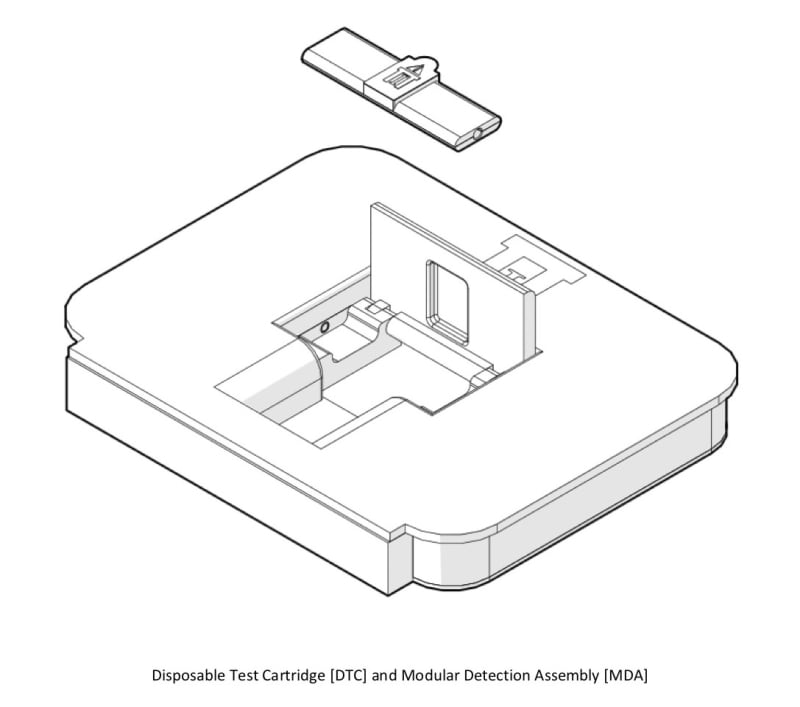Modular Presence Indicators [MPIs] are portable devices comprised of three parts that work in tandem as presence detectors. The devices are based in whispering gallery mode excitation where tunable light sources, detectors, and optical cavities are used as highly sensitive components. The three parts include disposable test cartridges [DTCs], modular detection assemblies [MDAs], and universal electronic controllers [UECs].
Disposable Test Cartridges or DTCs are, as their name indicates, one-time-use-disposable components, assemblies that include optical waveguides and optical cavities. They also include a body or casing, filter membranes, liquid solutions if required, magnets if required, and sealing labels. The body, depending of the design, may be made from any material desired, and may consist of one or several pieces, fused or joined together by any suitable method. These cartridges may include one or several waveguides and one or several optical cavities according to the desired number of targeted analytes. All cartridges, regardless of the number of waveguides within, are matched to a specific MDA and can only be utilized with that specific MDA.
Modular Detecting Assemblies or MDAs are self-contained assemblies that include all of the required optical light sources, light detectors, and electronics needed to perform a presence test with the help of a cartridge. All MDAs have a built-in cradling area dedicated for the disposable cartridges. These cradling areas are designed to help align the cartridges with the light sources and light detectors inside the MDA; they also help hold the cartridges in a secure and stable position for testing purposes; and they also provide some protection against external environment changes. Every MDA is designed specifically to a particular type of DTC, they are also designed to electronically pair-up with all UECs, regardless of the UEC model.
Universal Electronic Controllers or UECs are devices that can be considered the management center for all MDAs, and all UECs are purposely designed be able to pair themselves up with any MDA attached to a docking bay on the UEC. The electrical connection between an UEC and an MDA takes place through a series of electrical pads or through connectors located on some convenient location on the MDA. UECs are electronic devices capable to send to the MDA attached, all of the program protocols to run successful tests on cartridges attached to the MDAs. UECs also provide the power requirements to the MDAs and are the medium through which the user interfaces with the MDAs in order to run detection tests. With the help of displays or screens, UECs provide the results to the end-user and through simple visual indications help the user to run presence indication tests.
Main advantages of MPIs include compact size, ease of use and simple to operate. A single device, combined with several MDAs and DTCs can be utilized for testing of presence of several analytes. The devices are expected to have fast response and test results are expected to be obtained between 10 seconds and 15 minutes, depending o the nature of the application.
Like this entry?
-
About the Entrant
- Name:Pedro Sarmiento
- Type of entry:individual
- Software used for this entry:SolidWorks
- Patent status:pending








